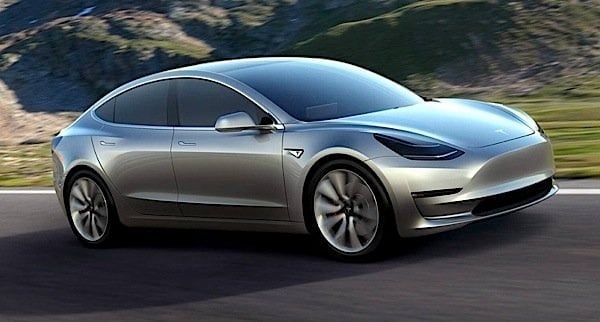
Is it a problem that other auto makers would love to have? Or is just a massive problem that could sink the company? Industry observers have been more than willing to ask the obvious question, now that Tesla has taken orders for more than 276,000 of its Model 3 all-electric cars. How is the company going to deliver them? There has never been anything like it—a writer in Forbes reminded readers that back in 1955 Citroen took orders for 12,000 of its model DS, and that was considered astonishing at the time.
Aside from the mind-boggling enthusiasm for the car, there remains the question of production. Tesla is currently building the world’s largest lithium-ion battery factory in Nevada, expressly to power eventual production of 500,000 cars from its California plant. But according to Forbes, the company does not have the capacity to turn out that number of cars now. Building 276,000 (and probably many more) cars would stretch to capacity of a fully operational plant. Nissan, for example, builds a million cars a year in Japan, in five plants that are spread all around the country, with its own transmission maker and other support facilities. And then there is the question of testing. Automakers usually do trial production runs to get rid of the bugs before going to market with a new car. Will Tesla have time to do that?
It’s by no means clear how this will turn out, but auto industry analysts are already predicting that the Tesla phenomenon will change traditional industry thinking about how to sell cars. It will also force the industry to get more serious about electric vehicles, which until now have been considered a niche market, not a mainstream one. Electric vehicles have so far been counted in the thousands, not the hundreds of thousands. Nissan has sold 211,000 of its Leaf since it launched in 2010, and that is the best-selling electric vehicle in the world. According to the Washington Post, Mazda sold 319,000 vehicles in the United States in all of 2015, not many more than Tesla’s advance orders for the Model 3, which were taken in just a few days.
More than one commentator has noted that Tesla is redefining cars as cool, cutting-edge technology, like an iPhone, rather than as a traditional car. This, some believe, accounts for the massive response to the release of the Model 3. But will the company’s “Silicon Valley mentality” whereby it values innovation above all and leaves the testing of its products to its loyal fanbase, be its Achilles heel?
The Tesla Model 3 will have a range of 345 kilometres (215 miles), which is similar to the range of the Chevrolet Volt. Tesla has said that the number of public supercharger stations will double to 7,200 by the end of 2017. Recharging a battery can be done in minutes, rather than hours.
































